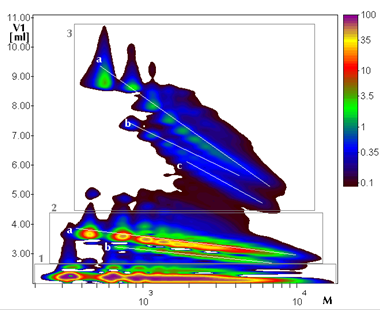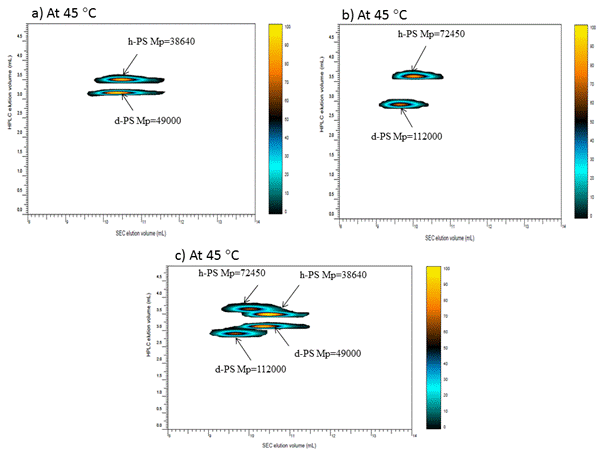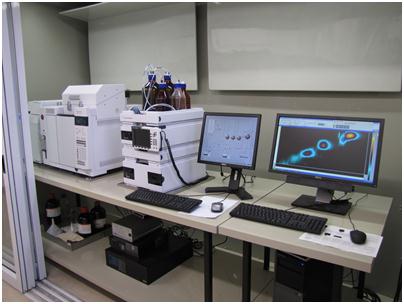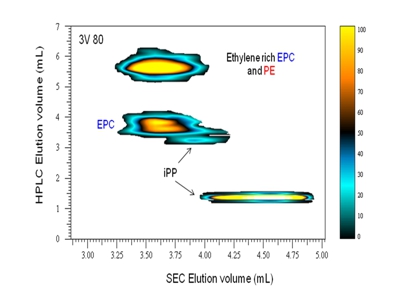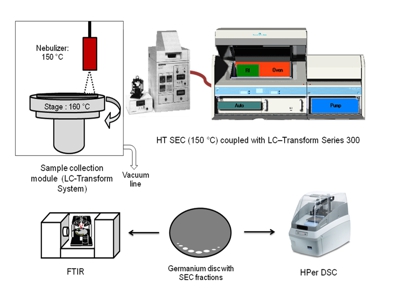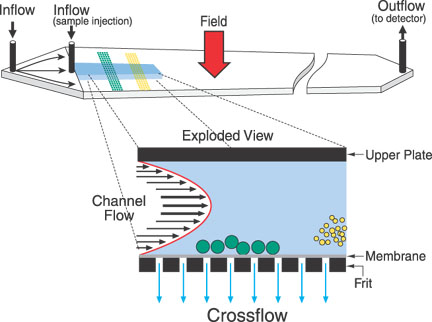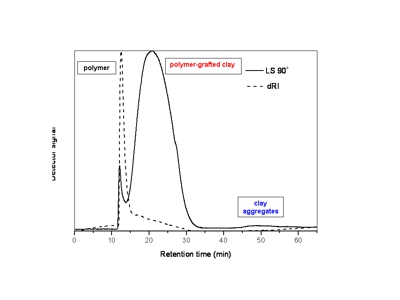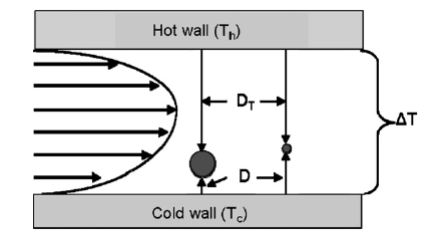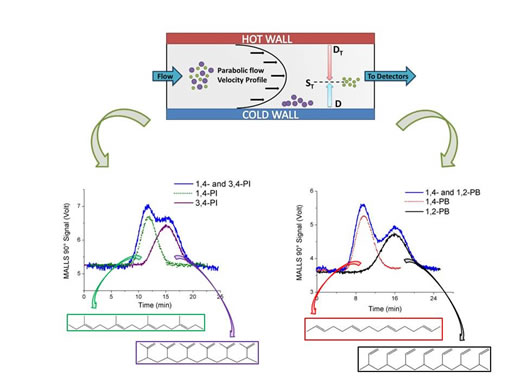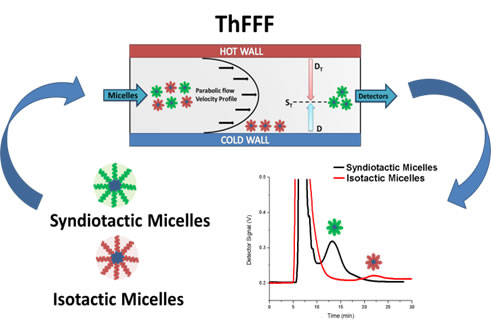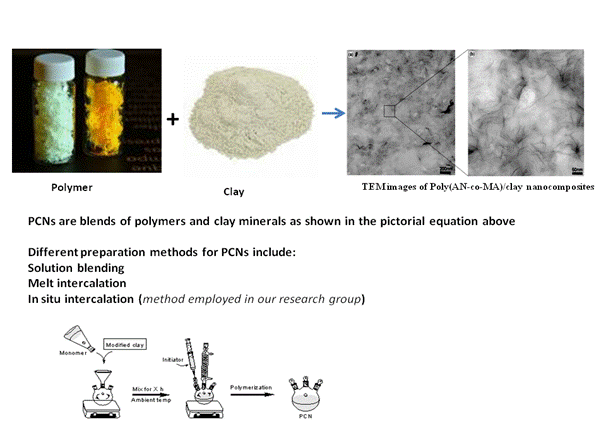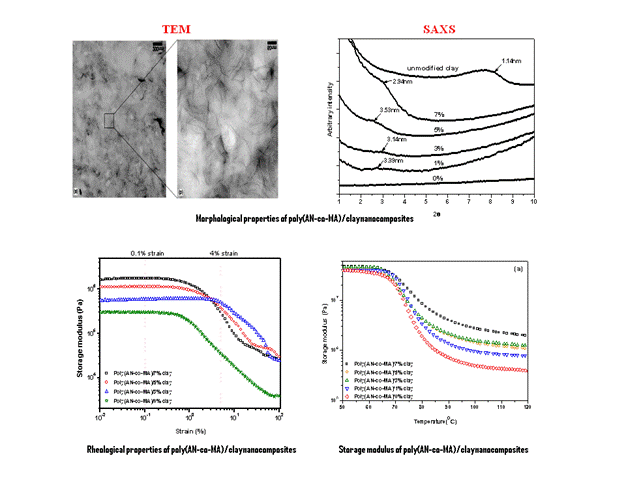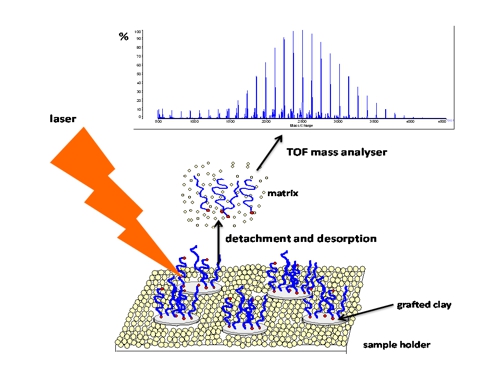Contact us
Division of Polymer Science
Department of Chemistry
and Polymer Science
University of Stellenbosch
Private Bag X1
7602 MATIELAND
South Africa
Telephone:
+27 (21) 808 3172
Where to find us
GPS Coordinates:
S 33° 55' 58" E 18° 51' 59"
Professor Harald Pasch - Research
Last revision: 14 March, 2016
Research in the Pasch group is focused on the development of multidimensional analytical techniques for complex polymers. This includes the coupling of different separation methods to each other (two-dimensional chromatography) and the hyphenation of separation methods with information-rich detectors like FTIR, NMR, and mass spectrometry. Separation methods to be used include all types of liquid chromatography (SEC, HPLC, chromatography at critical conditions), field flow fractionation, and fractionation methods based on crystallizability. Molecular parameters to be addressed are chemical composition distribution, functionality type distribution, and topology type distribution and their correlation with molar mass distribution.
Polymer systems of special interest are segmented copolymers (block and graft copolymers), functional polymers, hydrophilic copolymers, and polyolefins. To increase the efficiency of chromatographic separations, the group develops high-throughput fractionation techniques that are capable of fractionating complex polymers in a few minutes.
Comprehensive two-dimensional liquid chromatography
Comprehensive two-dimensional liquid chromatography separates complex macromolecular systems in diverging directions of molecular heterogeneity. Reactive epoxy resins, for example, are separated regarding endgroup functionality (Y-axis) and molar mass (X-axis), see Fig. 1. Both parameters are important for the evaluation of (A) the reactivity of the resin in a cross-linking reaction, and (B) the mechanical and thermal properties of the cross-linked material. 2D-LC is therefore an important tool for the establishment of structure-property relations.
Fig 1: 2D-LC separation of an epoxy resin regarding chemical composition and molar mass
In another application 2D-LC can be used to separate polymers according to the degree of deuteration. This is a very challenging task since polymers are separated that are identical regarding molar mass, endgroups and chemical composition. In the present work, critical conditions were established in such a way that one component of a complex mixture elutes at critical conditions, whereas the other component shows size exclusion chromatography (SEC) behaviour. Blends of protonated (h) and deuterated (d) polystyrene (PS) were separated by LCCC at critical conditions of both h-PS and d-PS. Depending on the molar masses of the blend components, baseline separation was achieved. In order to improve the separation further, comprehensive two-dimensional liquid chromatography was carried out on a number of model blends. In the first dimension LCCC was used, which separated the blends according to isotopic effects whereas in the second dimension the separation took place with respect to hydrodynamic volume. In order to further improve the separation of a number of blends a separation protocol was used where one component shows SEC conditions whereas the other component shows liquid adsorption chromatography (LAC) conditions. This separation protocol was achieved by varying the column temperature, see Fig. 2. Similarly selective fractionations can also be conducted regarding polymer microstructure and tacticity as has been shown for polybutadiene and polymethyl methacrylate.
Fig 2: Two-dimensional contour plot of: (a) Blend of d-PS (Mp=49000) + h-PS (Mp=38640), (b) Blend of d-PS (Mp=112000) + h-PS (Mp=72450) and (c) Blend of d-PS (Mp=112000) + d-PS (Mp=72450) + h-PS (Mp=38640) + h-PS (Mp=72450) measured at the THF-ACN composition of 47:53 v/v and a column temperature of 45°C, all molar masses in g/mol
References
H. Pasch, B. Trathnigg: Multidimensional HPLC of Polymers. Springer-Verlag, Berlin-Heidelberg-New York, 2013, ISBN: 978-3-642-36079-4
M.I. Malik, H. Pasch: Novel Developments in the Multidimensional Characterization of Segmented Copolymers. Progr. Polym. Sci. 39 (2014) 87-123, http://dx.doi.org/doi:10.1016/ j.progpolymsci.2013.10.005
W. Hiller, P. Sinha, M. Hehn, H. Pasch: LC-NMR from an Expensive Toy to a Powerful Tool in Polymer Analysis. Progr. Polym. Sci. 39 (2014) 979-1016, doi:10.1016/j.progpolymsci.2013.10.001
P. Sinha, G. Harding, K. Maiko, H. Pasch: Comprehensive Two-Dimensional Liquid Chromatography for the Separation of Protonated and Deuterated Polystyrene. J. Chromatogr. A 1265 (2012) 95-104
K. Maiko, M. Hehn, W. Hiller, H. Pasch: Comprehensive Two-dimensional Liquid Chromatography of Stereoregular Poly(methyl methacrylate)s for Tacticity and Molar Mass Analysis. Anal. Chem. 85 (2013) 9793-9798, dx.doi.org/10.1021/ac402203c
M. Hehn, P. Sinha, H. Pasch, W. Hiller: Onflow LCCC‑1H/NMR and LCCC‑2H/NMR as Powerful Tools for the Separation of PMMA According to Isotopic Composition. J. Chromatogr. A 1387 (2015) 69-74, doi:10.1016/j.chroma.2015.02.012
K. Maiko, H. Pasch: Comprehensive Microstructure and Molar Mass Analysis of Polybutadiene by Multidimensional Chromatography. Macromol. Rapid Commun. 36 (2015) 2137-2142, DOI: 10.1002/marc.201500381
Advanced multidimenisional methods for polyolefin analysis
Cutting edge research is conducted on novel fractionation methods for polyolefins. Recently, a unique instrument for high-temperature multidimensional fractionation of complex polyolefins has been taken into operation, see Figure 3. The high-temperature 2D-LC separates polyolefin copolymers and blends with regard to chemical composition (branching) and molar mass. These parameters directly relate to the physical properties of the materials such as melting and crystallization temperatures, toughness and degradability.
Fig 3: Photograph of the high-temperature 2D-LC instrument
In a number of current projects the molecular composition of impact polypropylene copolymers (IPC) is investigated. Figure 4 shows the 2D-LC separation of a TREF fraction obtained by preparative crystallization fractionation.
Fig 4: HT-2D-LC contour plot for a prep TREF fraction of IPC
In other projects TREF fractions are further fractionated by SEC or HPLC and the fractions analysed by FTIR or differential scanning calorimetry. Using this multidimensional approach, the complex nature of IPC can be fully described, see Figure 5.
Fig 5: Polymer cross-fractionation techniques (SEC-FTIR and SEC-HPer DSC)
References
H. Pasch, M.I. Malik, T. Macko: Recent Advances in High-Temperature Fractionation of Polyolefins. Adv. Polym. Sci. 251 (2013) 77-140, DOI: 10.1007/12_2012_167
S. Cheruthazhekatt, T.F.J. Pijpers, G.W. Harding, V.B.F. Mathot, H. Pasch: Multidimensional Analysis of the Complex Composition of Impact Polypropylene Copolymers: Combination of TREF, SEC-FTIR-HPer DSC, and High Temperature 2D-LC. Macromolecules 45 (2012) 2025−2034
S. Cheruthazhekatt, T.F.J. Pijpers, G.W. Harding, V.B.F. Mathot, H. Pasch: Compositional Analysis of an Impact Polypropylene Copolymer by Fast Scanning DSC and FTIR of TREF-SEC Cross-Fractions. Macromolecules 45 (2012) 5866-5880
M.J. Phiri, S. Cheruthazhekatt, A. Dimeska, H. Pasch: Molecular Heterogeneity of Ethylene-Propylene Rubbers: New Insights Through Advanced Crystallization-Based and Chromatographic Techniques. J. Polym. Sci. A Polym. Chem. 53 (2015) 863-874, DOI: 10.1002/pola.27512
A. Ndiripo, D. Joubert, H. Pasch: Ethylene-1-Heptene Copolymers as Interesting Alternatives to 1-Octene-Based LLDPE: Molecular Structure and Physical Properties. J. Polym. Sci. A, Polym. Chem. 54 (2016) 962-975, DOI: 10.1002/pola.27932
Field flow fractionation of complex polymer nanocomposites
Field-flow fractionation (FFF) is a family of analytical techniques developed specifically for separating and characterizing macromolecules, supramolecular assemblies, colloids and particles. It combines the effects of a laminar flow profile with an exponential concentration profile of analyte components caused by their interactions with a physical field applied perpendicular to the flow of a carrier liquid. In the Pasch group, FFF techniques are used for analysis of synthetic and biopolymers as a complimentary technique to SEC. Another active field of research is the separation of polymer nanocompsites.
Asymmetrical Flow Field-Flow Fractionation (AF4) is a unique method for separation of polymers and nanoparticles. The separation in AF4 is governed by an additional flow (cross flow) that is applied perpendicularly to the separation axis (i.e. the main flow). This results in a separation according to the diffusion coefficient of the particles and therefore the hydrodynamic volume. Smaller molecules will have higher diffusion coefficients and consequently reside in higher flow velocity zones and will therefore elute earlier than the larger molecules as illustrated in Figure 6.
Fig 6: Schematic representation of asymmetric flow field-flow fractionation
AF4 is perfect complementary method to SEC with several advantages over SEC like all column related problems especially for ultrahigh molar masses. The analysis of carbon nanotubes and DNA suspensions by AF4 is shown in Figure 7.
Fig 7: AF4 elution profile of a polymer-clay nanocomposite
Thermal FFF is another powerful technique for polymer analysis. A temperature gradient is applied perpendicularly to the axial carrier liquid flow in thermal FFF to achieve separation. Analytes are driven to the cold wall (accumulation wall) by their interaction with the applied temperature gradient. This mass transport is termed thermal diffusion, and is represented by the thermal diffusion coefficient (DT), see Figure 8. The main advantages of thermal FFF over SEC are its sensitivity to both molecular weight and chemical composition and its high resolution and selectivity for ultrahigh molar masses.
Fig 8: Schematic illustration of a thermal FFF channel and separation
The sensitivity of ThFFF towards chemical composition and microstructure has been demonstrated recently with the fractionation of polyisoprene, polybutadiene and polymethyl methacrylate regarding microstructure and tacticity, see Fig 9.
Fig 9: Thermal FFF fractionation of polybutadiene and polyisoprene regarding microstructure (top) and fractionation of block copolymer micells regarding tacticity of the corona block (bottom)
References
F.A. Messaud, R.D. Sanderson, J.R. Runyon, T. Otte, H. Pasch, S.K.R. Williams, Field-flow fractionation techniques and their applications in the separation and characterization of polymers. Progr. Polym. Sci. 34 (2009) 351–68
A.C. Makan, T. Otte, H. Pasch: Analysis of High Molar Mass Branched Polybutadienes by SEC-MALLS and AF4-MALLS. Macromolecules 45 (2012) 5247-5259
W. van Aswegen, W. Hiller, M. Hehn, H. Pasch: Comprehensive Triblock Copolymer Analysis by Coupled ThFFF-NMR. Macromol. Rapid Commun. 34 (2013) 1098-1103, DOI: 10.1002/marc.201300286
G. Greyling, H. Pasch: Multidetector Thermal Field-Flow Fractionation as a Novel Tool for the Microstructure Separation of Polyisoprene and Polybutadiene. Macromol. Rapid Commun. 35 (2014) 1846-51, DOI: 10.1002/marc.201400405
G. Greyling, H. Pasch: Tacticity Separation of Poly(methyl methacrylate) by Multidetector Thermal Field-Flow Fractionation. Anal. Chem. 87 (2015) 3011-3018, dx.doi.org/10.1021/ac504651p
G. Greyling, H. Pasch: Multidetector Thermal Field-Flow Fractionation as a Unique Tool for the Tacticity-Based Separation of Poly(methyl methacrylate)-Polystyrene Block Copolymer Micelles. J. Chromatogr. A 1414 (2015) 163-172, http://dx.doi.org/10.1016/j.chroma.2015.08.023
Synthesis and characterization of polymer-clay nanocomposites (PCNs)
A nanocomposite is a multiphase solid material where one of the phases has two, or three dimensions of less than 100 nm, or structures having nanoscale repeat distances between the different phases that make up the material. These materials include porous media, colloids, gels and copolymers. These materials have wide range of applications such as flame retardants, coatings, packaging, automobile parts etc. The synthesis and characterization of these materials is one of the research focuses of the Pasch group. The preparation methods of polymer/clay nanocomposites and their morphological and rheological characterization results of some of the products under study are shown in Figures 10 and 11, respectively.
Fig 10: Preparation methods of polymer-clay nanocomposites
Fig 11: Morphological and rheological characterization of PCNs
A new and interesting approach for the analysis of polymers that are grafted on the surface of nanaoclays is MALDI-ToF mass spectrometry. Polymer/clay hybrid materials were synthesised by grafting polymer chains from the surface of the clay via surface-initiated reversible addition fragmentation chain transfer polymerisation. The grafted polymer chains were analysed directly from the clay using MALDI-TOF-MS regarding the oligomer distribution, see Figure 12. The endgroup structures of the free and grafted polymer were also investigated. This work expands the application bracket for MALDI-TOF-MS as it shows that the analysis of polymer attached to a solid surface via electrostatic interactions is possible without detaching them.
Fig 12: MALDI-ToF analysis of polymer molecules that are grafted onto a clay surface
References
H. Chirowodza, P.C. Hartmann, H. Pasch: MALDI-TOF Analysis of the Grafting of Clay Nanoparticles with Poly(n-butylacrylate). Macromol. Chem. Phys. 213 (2012) 847-857
E. Zengeni, P.C. Hartmann, H. Pasch: Encapsulation of Clay by Ad-miniemulsion Polymerisation: The Influence of Clay Size and Modifier Reactivity on Latex Morphology and Physical Properties. ACS Appl. Mater. Interfaces 4/12 (2012) 6957-68, dx.doi.org/10.1021/am302110c
E. Zengeni, P.C. Hartmann, H. Pasch: Highly Filled Polystyrene/Laponite Hybrid Nanoparticles Prepared Using the Ad-miniemulsion Polymerisation Technique. Macromol. Chem. Phys. 214 (2013) 62-75, DOI: 10.1002/macp.201200330
E. Zengeni, P.C. Hartmann, H. Pasch: Crumpled Highly Filled Poly(Styrene-co-Butyl acrylate)/Clay Hybrid Latex Nanoparticles. Composite Sci. Technol. 84 (2013) 31-38, http://dx.doi.org/10.1016/j.compscitech.2013.04.021


